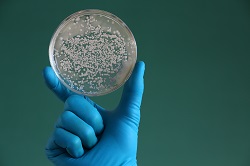Gene cluster identification made easy through data mining
Ribosomally synthesised and post-translationally modified peptides (RiPPs), a diverse group of biologically active bacterial molecules, have been attracting a lot of attention lately thanks to their vast potential for therapeutic applications. Although they may seem unfamiliar, bacteriocins, one such class of molecules, have been widely utilised in the food industry over the past few decades. For example, nisin, a bacteriocin with antimicrobial properties, is used as a food biopreservative in dairy products, canned foods and cured meat. In recent years, its application has also been extended to biomedical fields. To facilitate the research in RiPPs and bacteriocins, a team of scientists partially supported by the EU-funded Rafts4Biotech project have presented the latest version of a web-based software tool called BAGEL. The team published the features of the BAGEL4 web server recently in the ‘Nucleic Acids Research’ journal. As explained in the article, mining web servers could be useful in “pinpointing the genetic origin of an observed antimicrobial activity and hence identifying the associated chemical structure.” This involves the process of using data mining techniques and algorithms to extract information directly from the web. The researchers said BAGEL4 is a web server “that enables users to identify and visualise gene clusters in prokaryotic DNA involved in the biosynthesis of RiPPs and (unmodified) bacteriocins.” Its input could also be extended with ribonucleic acid sequencing data. “Overall BAGEL4 has been updated and extended with new features; it’s user-friendlier and offers reliable, fast and convenient mining of bacteriocins and RiPPs.” Rafts4Biotech was set up to overcome some of the challenges of biotechnological processes related to bacteria. As stated on the project website, “the performance of these microorganisms in the demanding industrial conditions is limited by the toxicity of some compounds and the complex metabolic interactions that occur within the bacterial cells.” The Rafts4Biotech’s strategy relies on “confining the production of these compounds to specialised areas of the microbe’s membrane called lipid rafts. These recently-discovered regions present an ideal setting to avoid interferences with bacterial metabolism and viability, thus increasing productivity.” One of the case studies covered by the project focuses on producing a new generation of effective antibiotics to fight resistant infections. “Rafts4Biotech will apply the raft technology to the development of high value-added antimicrobials that normally cannot be produced due to their toxicity.” The same technology will also be implemented in the production of ß-carotene and vitamins A and B – replacing chemical-based production by sustainable bioprocesses that operate at lower temperatures and require less energy. Another case study involves controlling and eliminating food and drinking water pollutants such as trichloropropane, an industrial solvent used as a cleaning and degreasing agent. In an interview on the Rafts4Biotech website, project coordinator Daniel López explains the lipid rafts in detail: “Any cellular membrane is made of lipids, and they aggregate according to their physicochemical properties. Like oil and water don’t mix, specific lipids stay together forming droplets or domains. These lipid clusters embed membrane proteins conditioning their function.” This specialised membrane structure is known as a lipid raft. “The proteins in a membrane are like the motor in a car, they need the right oil to work, and the lipids in the membrane are precisely like this oil, ensuring that the proteins that they cluster work properly.” The Rafts4Biotech (Synthetic bacterial lipid rafts to optimize industrial bioprocesses) project combines different expertise in synthetic biology, systems biology and mathematical modelling to translate its technology into market application. For more information, please see: Rafts4Biotech project website
Countries
Spain



